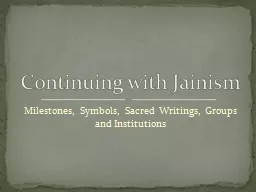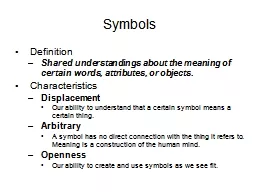PPT-Milestones, Symbols, Sacred Writings, Groups and Institutio
Author : celsa-spraggs | Published Date : 2017-06-08
Continuing with Jainism Milestone Sallekhana Recall How did Mahavira die p 71p 73 Sallekhana is the process of gradually fasting to the point of death A person
Presentation Embed Code
Download Presentation
Download Presentation The PPT/PDF document "Milestones, Symbols, Sacred Writings, Gr..." is the property of its rightful owner. Permission is granted to download and print the materials on this website for personal, non-commercial use only, and to display it on your personal computer provided you do not modify the materials and that you retain all copyright notices contained in the materials. By downloading content from our website, you accept the terms of this agreement.
Milestones, Symbols, Sacred Writings, Groups and Institutio: Transcript
Download Rules Of Document
"Milestones, Symbols, Sacred Writings, Groups and Institutio"The content belongs to its owner. You may download and print it for personal use, without modification, and keep all copyright notices. By downloading, you agree to these terms.
Related Documents














